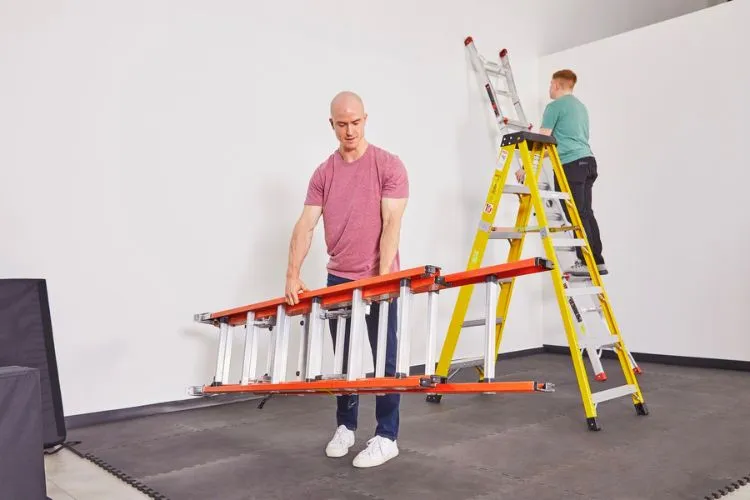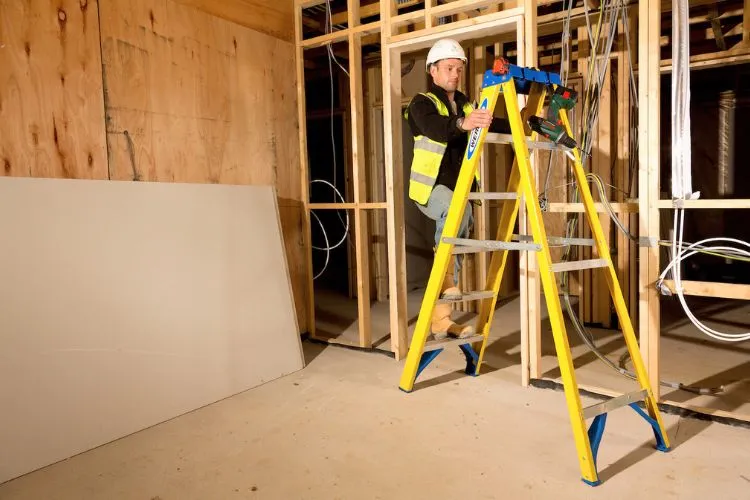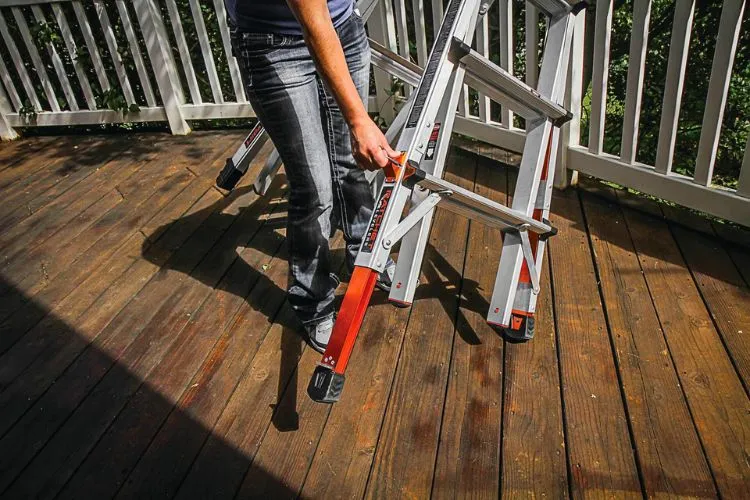In the world of tools and equipment, ladders stand out as fundamental aids for a multitude of tasks. From simple at-home chores to complex professional endeavors, the right ladder can make a world of difference.
Ladders come in various classes, each designed to meet specific needs and safety standards.
Among these, Class 3 ladders offer unique features and limitations that cater to light-duty applications. Understanding what these ladders are, their specifications, and their proper usage is essential for ensuring safety and efficiency.

Understanding Ladder Classes
Ladders are classified based on their build quality and load capacity. This classification helps users choose the right ladder for their specific needs, ensuring safety and durability.
While Class 1 and Class 2 ladders are designed for heavy-duty and medium-duty use, respectively, Class 3 ladders are tailored for light-duty tasks.
What are Class 3 Ladders?
Design and Specifications
Class 3 ladders are made with lighter materials such as aluminum or fiberglass, allowing for easy transportation and handling.
They are meant to support a maximum load capacity of 125 kg, including the user’s weight and any tools or materials being carried up the ladder.
Unlike their Class 1 and Class 2 counterparts, which are built for more rigorous and frequent use, Class 3 ladders are designed for occasional use around the house.
Safety Features
To ensure safety, Class 3 ladders come with specific features like slip-resistant steps and stability bars at the base.
Recognizing a genuine Class 3 ladder involves looking for safety labels and certifications that indicate compliance with national safety standards.
Best Practices for Use
When using a Class 3 ladder, it’s crucial to deploy it properly, ensuring that all locks and braces are securely in place. Regular inspections for wear and tear can prevent accidents, making maintenance an essential part of ladder safety.
Applications of Class 3 Ladders
Class 3 ladders are most suitable for light-duty tasks such as painting, decorating, or reaching high shelves in a home setting.

Their design makes them a poor fit for professional use on construction sites or for industrial maintenance, where heavier, more durable ladders are necessary.
Advantages and Limitations

Pros
One of the primary advantages of Class 3 ladders is their affordability and suitability for light duties. Their lightweight design makes them easy to move and store, ideal for home use.
Cons
The main limitation of Class 3 ladders is their restricted load capacity and durability. For tasks that require more frequent ladder use or involve heavier loads, opting for a Class 1 or Class 2 ladder would be more appropriate.
Pro Tips for Choosing the Right Ladder
Choosing the right ladder requires consideration of several factors, including weight capacity, material, and intended use.
For light-duty tasks, a Class 3 ladder provides a cost-effective and practical solution. However, for more demanding tasks, a higher-class ladder is necessary to ensure safety and efficiency.
Maintenance and Care
Taking care of a Class 3 ladder involves regular cleaning to remove debris that could compromise safety. Inspecting the ladder for damage before and after use can help extend its life and maintain its integrity.
Legal and Compliance Aspects
Compliance with regulations and standards is crucial for all ladder classes. Users must be aware of the legal requirements surrounding ladder use in their specific fields to ensure safety and avoid liability.

In conclusion, Class 3 ladders offer a lightweight, affordable option for light-duty tasks around the home. Their design and load capacity make them unsuitable for heavy-duty professional use, but they provide an excellent solution for occasional needs.
Understanding the specifications, proper use, and maintenance of Class 3 ladders can enhance safety and task efficiency.
As with any equipment, prioritizing safety by choosing the right ladder for the job and following best practices for its use and care is paramount. With the right knowledge and attention to detail, users can make the most of what Class 3 ladders have to offer.
Detailed Specifications of Class 3 Ladders
Class 3 ladders, designed for light duty, are built to support a maximum load of 125 kg, including the user and any carried items. They are typically made from aluminum or fiberglass, offering a lightweight yet sturdy structure.
These ladders are ideal for low or infrequent domestic tasks, providing a balance between utility and ease of storage, with varied lengths to suit different heights and tasks.
Frequently Asked Questions
What makes Class 3 ladders different from Class 1 and Class 2?
Class 3 ladders are designed for light-duty use with a maximum load capacity of 125 kg, making them less sturdy than Class 1 and Class 2 ladders, which are intended for heavy-duty and medium-duty applications, respectively.
Are Class 3 ladders suitable for professional use?
Class 3 ladders are primarily designed for occasional, light-duty tasks such as home maintenance and decorating. They are not recommended for professional use in environments that require frequent ladder use or heavier loads.
How do I properly maintain a Class 3 ladder?
Regular maintenance includes cleaning, inspecting for damages such as cracks or wear on the steps, and ensuring that moving parts function correctly. Proper storage away from harsh weather conditions also helps extend the ladder’s lifespan.
Can Class 3 ladders be used outdoors?
While Class 3 ladders can be used outdoors, they are intended for light-duty tasks and may not withstand the demands of heavy outdoor use, especially in harsh weather conditions.
Where can I find the classification of a ladder indicated?
The classification should be clearly labeled on the ladder itself, usually on a side rail or near the base, including safety certifications and maximum load capacity.
Conclusion:
In summary, Class 3 ladders are specifically designed for light-duty tasks around the home. They are the ideal choice for infrequent use where the load does not exceed 125 kg.
While they offer the advantages of being affordable and lightweight, they also have limitations in terms of durability and load capacity when compared to higher-class ladders.
Knowing when and how to use Class 3 ladders correctly is crucial to ensuring safety and task efficiency. These ladders meet the needs of casual users by balancing convenience and functionality for less demanding jobs.


